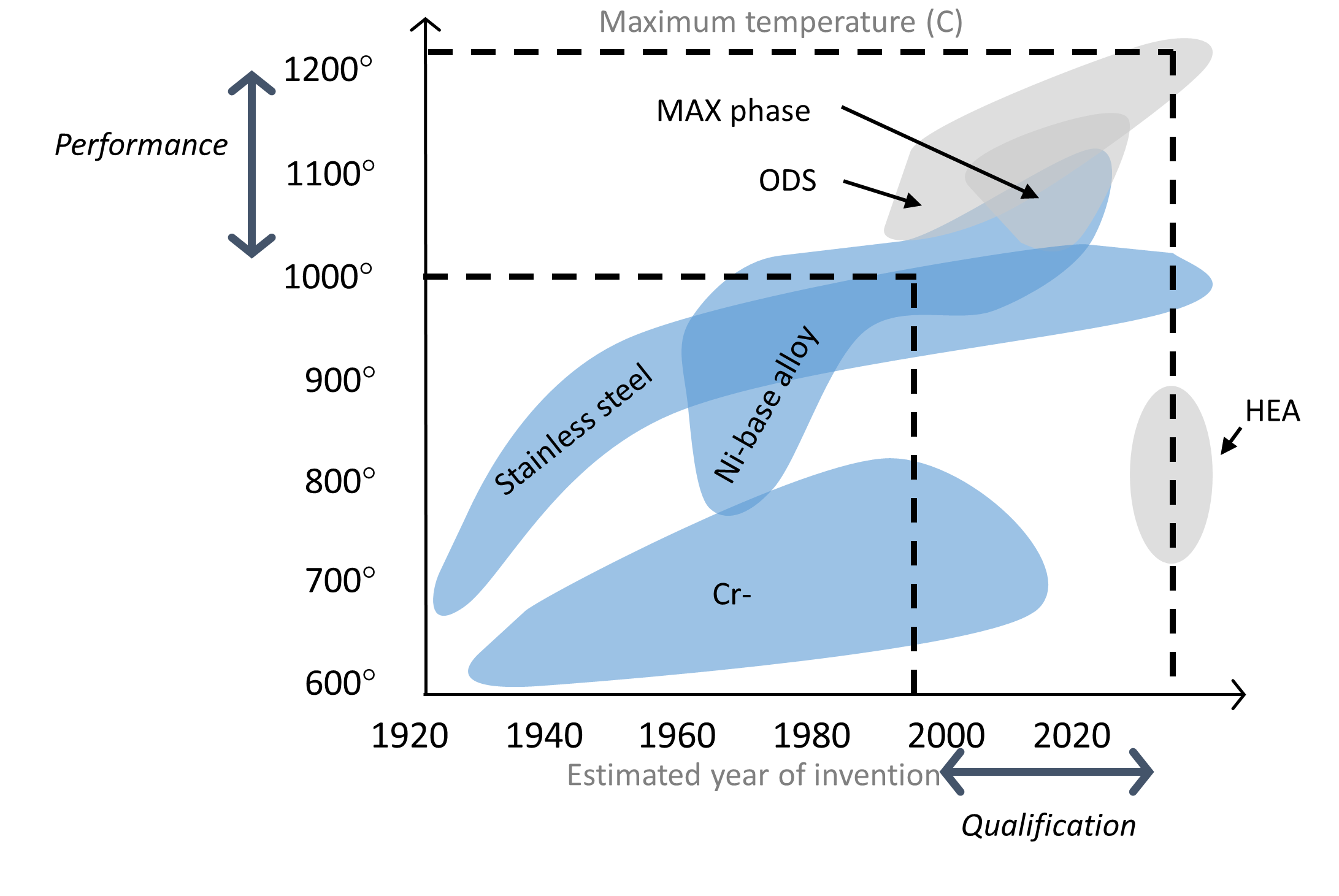Putting new materials into service takes time. The lag between the discovery of a new material and its first use in industry is often 30 years or more. Therefore, new innovations in materials science do not have an impact on industry for decades.
Decreasing this gap between material discovery and application would greatly increase the palette of materials available to industry and provide access to new materials with improved characteristics.
Improving the range and performance of available materials would have an enormous impact on U.S. industry, including:
- Increasing the efficiency of energy generation and storage technologies
- Enabling the generation of carbon-neutral, high-quality process heat for the chemical and manufacturing industries
- Improving the fuel efficiency, safety and cost of automobiles and aircraft
- Reducing economic losses caused by material corrosion and degradation, which has a multi-trillion-dollar impact annually on the U.S. economy
- Bringing the potential benefits of advanced materials and manufacturing processes, including metal additive manufacturing, to key industries
The key challenge in material qualification is determining how a new material will behave over its service life in the final application. Often, engineers rely on expensive, long-term experimental testing in simulated component environments to determine the material’s behavior. The need for this testing often represents the most significant delay between the discovery of a new material and when it goes into an actual application.
Pictured above is a case study of the lag between material discovery and qualification. The study plots the maximum use temperature of different classes of materials versus the year the material was invented. The plot shows a qualification lag of about 30 years – it takes about 30 years for new mat.
Argonne’s Solution: Using Automation
Argonne aims to accelerate material qualification by automating the process of collecting experimental data and creating accurate predictive models for key engineering material properties.
Argonne researchers have developed machine learning software that can automatically train statistical, physics-based models that bound the long-term performance of materials operating in challenging service conditions.
A case study demonstrates that models like this can extrapolate forward in time by a factor of 20 or more – meaning qualifying a material for 30 years of use could require as little as one to two years of test data. However, the trade-off is these models require large short-term data sets describing the material’s response to the types of loads it will see in service.
Automated short-term testing could rapidly and automatically generate this data. Active machine learning couples the model calibration and experimental tests so the model can request the test conditions that provide the most information to reduce uncertainty in the model’s predictions. The test equipment can then automatically provide the test data at those conditions.
The video above shows an automated testing demonstration. The robot arm automatically picks up a sample, loads it in the test frame, waits for the test to complete, and clears the broken sample.
